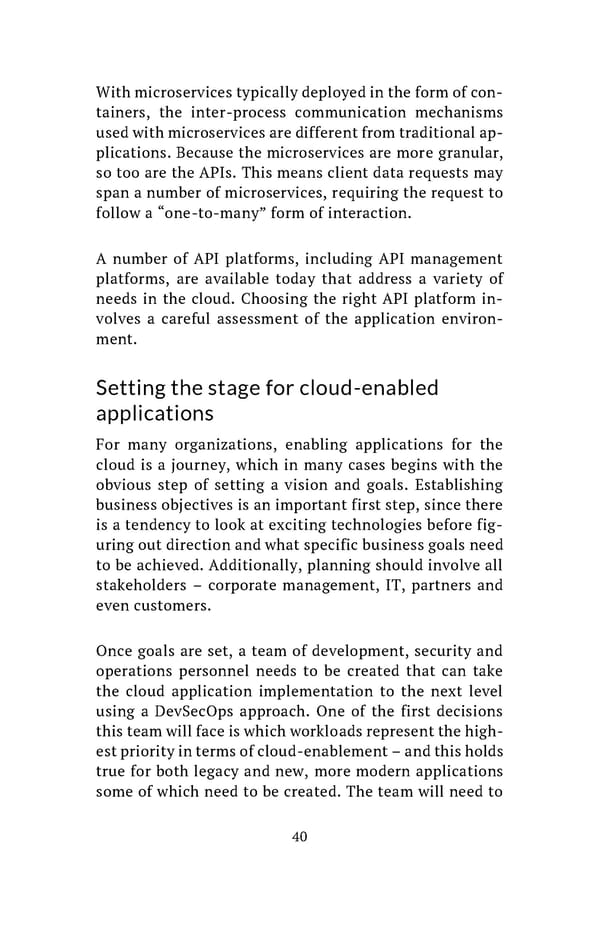With microservices typically deployed in the form of con- tainers, the inter-process communication mechanisms used with microservices are different from traditional ap- plications. Because the microservices are more granular, so too are the APIs. This means client data requests may span a number of microservices, requiring the request to follow a “one-to-many” form of interaction. A number of API platforms, including API management platforms, are available today that address a variety of needs in the cloud. Choosing the right API platform in- volves a careful assessment of the application environ- ment. Setting the stage for cloud-enabled applications For many organizations, enabling applications for the cloud is a journey, which in many cases begins with the obvious step of setting a vision and goals. Establishing business objectives is an important first step, since there is a tendency to look at exciting technologies before fig- uring out direction and what specific business goals need to be achieved. Additionally, planning should involve all stakeholders – corporate management, IT, partners and even customers. Once goals are set, a team of development, security and operations personnel needs to be created that can take the cloud application implementation to the next level using a DevSecOps approach. One of the first decisions this team will face is which workloads represent the high- est priority in terms of cloud-enablement – and this holds true for both legacy and new, more modern applications some of which need to be created. The team will need to 40
 Building Cloud Native Apps Painlessly Page 44 Page 46
Building Cloud Native Apps Painlessly Page 44 Page 46